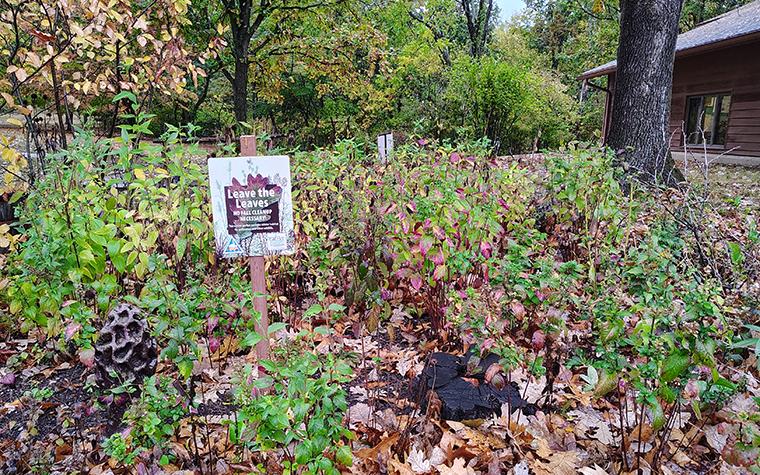Save your back, cash and pollinators.
INDEPENDENCE, Mo. – Pollinators want you to sit back and take it easy this fall.
Put the rake away and use fallen leaves as a winter haven for pollinators, says Tamra Reall, University of Missouri Extension field specialist in horticulture.
Pollinators rely on leaves, plant stems and dried flower heads for survival. “Let sleeping bees lie, since approximately 70% of all bee species nest in the ground,” says Reall.
In winter, native bees take shelter from the cold and nest inside stems and heads of flowers. Hollow stems provide a place for bees to hibernate until spring.
The hollow stems of smaller plants like bee balm are perfect for cavity-nesting bees and other beneficial insects. Pithy plants such as yucca can provide a hidey-hole for larger insects.
Also, limit moving perennials to avoid disturbing pollinators.
Leave some seed heads for wintertime food for small birds. They also will appreciate the spaces provided for insects, which serve as a valuable food source for birds.
Leaving a layer of leaves provides insulation. It’s like wrapping your perennial plants with a cozy blanket when winter’s chill hits, says Reall.
It is best not to shred leaves in flower beds since shredding damages overwintering eggs and larvae. Insects will shred the leaves for you. If you compost, leave your leaf pile and let it break down naturally. Leaf-eating insects like millipedes and roly-polies will thank you.
Leaves in your beds also provide free compost full of organic material that can improve soil nutrition, aeration, root penetration and water flow in clay-type soils. They may also suppress weeds.
That’s not to say you can’t tidy up your lawn, says Reall.
It’s courteous to let neighbors know why you are leaving leaves. Ask them to join your hands-off approach to make the neighborhood pollinator-friendly and save space in the landfill.
If you have fallen logs or branches, use them to line your native plant area. They’ll add definition and serve as a winter food source.
The MU Extension guide Making and Using Compost is available for free download.
Photo
Leave the leaves. Fallen leaves can serve as winter havens for pollinators. Photo courtesy of Tamra Reall.
